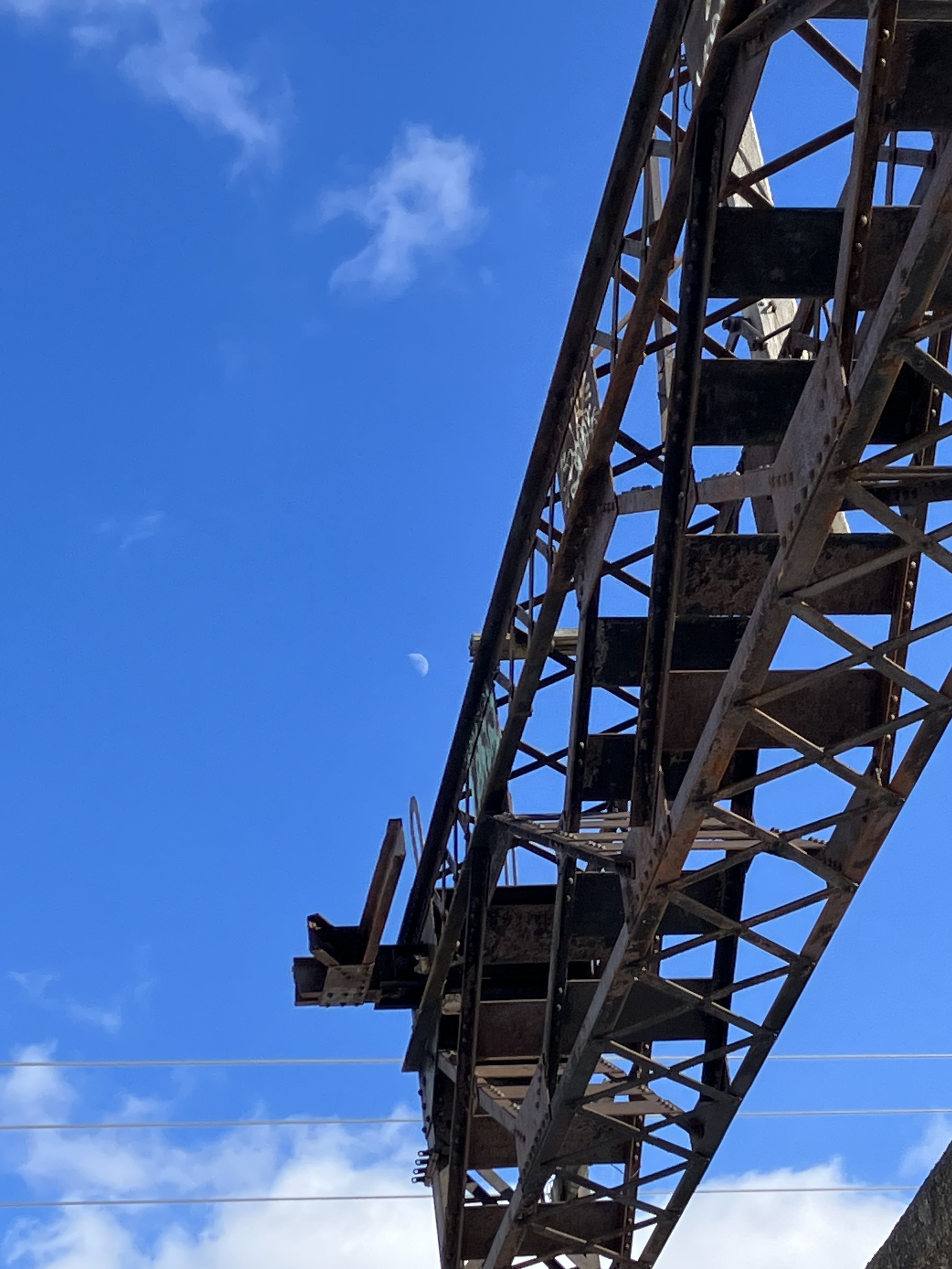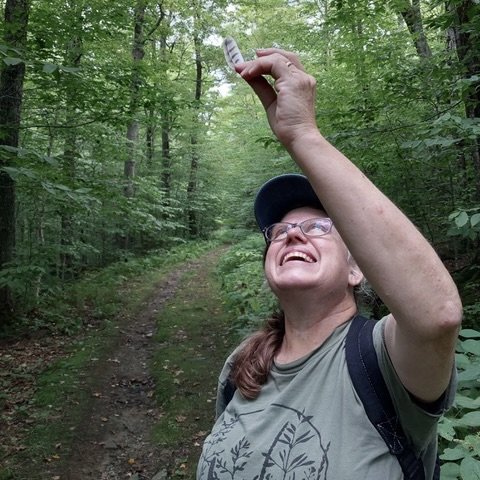
Let It Be: A Cautionary Tale of the Pine Street Barge Canal
"Nature reclaimed its territory and began healing from within.
Birds, beavers, rabbits, and crows all call this place home.
With raccoons, lily pads, and mushrooms in droves.
Life kept thriving, no matter what, the land kept surviving.
If you look closely, it is wonderful to see.
The relics of old are now overgrown with the pickerelweed.
Ivy scales the facade of the bridge, and forever chemicals
Will eventually meet their unnatural end.
Friends organized around this concept and proclaimed a new decree—
In the case of the redevelopment of the Barge Canal, "Let It Be."
This mural reflects the layered and complex history of the Pine Street Barge Canal, its negative impact on the natural environment, and the healing that can happen when we let nature be. It is a cautionary tale, urging us to acknowledge and remember the stories of the past so that mistakes are not repeated. While the harms cannot be undone, the future may yet be shaped by renewal and hope. It is time for the rewilding."
from the Barge Canal Mural Brigade, Summer 2025
Juniper Creative Arts and artist apprentices: Richie Amerson, Mateo Baker-Djele, Nico Jastatt, Bella Listi,
Calvin Millham-Berry, Coretta Ngoulaki, Levi Olsen, Ellie Traxler-Menz.

We want to capture your imagination and revitalize development in the South End! Please join us June 19, at the Ward 5 NPA on when Friends of the Barge Canal will present our vision for South End development.
FBC News
Latest update: Alternative Vision for the Barge Canal
Check out our podcast!
The Perspectives on the Barge Canal podcast aims to showcase the value of this land to all of the locals. In our second episode, listen to master naturalist Alicia Daniel talk about the natural history of the Barge Canal, and the importance of this space to Burlington’s wildlife.
Click here to read the Friends of the Barge Canal’s response to this plan at the NPA meeting.
Click here to read about our alternative vision for the Barge Canal.
Updates on Barge Canal Housing Proposal
A housing development plan for the Barge Canal was launched into the public process at the Ward 5 NPA meeting on Thursday, May 15.
The Pine Street Barge Canal is a 28 acre undeveloped piece of land that sits between Pine St. and Lake Champlain in Burlington’s southern end. Composed of both public and private parcels, it includes approximately 20 acres of wetlands.
The original Abenaki inhabitants of the area considered it an abundant source of fish and food and protection for the lake. The pre-colonial natural communities were wetlands, likely cattail marsh, lakeside floodplain forests and silver maple-sensitive fern floodplain forest. In the 19th century, early industrialists considered it a swamp, and began to fill it with sawdust and wood chips from Burlington’s lumber industry.
In the 20th century, it got worse, and the land became the site of a coal gasification plant. While coal gas provided light and heat for Burlington’s homes, it was an extremely dirty industry, and the coal tar, heavy metals, and numerous other toxins produced were simply dumped on the adjacent land and water.
This plant closed in 1966, and thanks to former U.S. Senator Jim Jeffords, the site was added to the Environmental Protection Agency’s Superfund Priority List in 1982. An initial EPA “remediation” proposal involving scooping up contaminated soil and creating a giant toxic dump was defeated by citizen activism. In 1997, a panel made perhaps the wisest possible choice: leave the land alone. Over the years the land has begun to slowly heal itself, as various plans for development have failed.
Get to know the Pine Street Barge Canal
The story continues with a new challenge.
Now, a convergence of factors is leading to new proposals for development. We ask what kind of “development” will both care for this damaged land and protect Lake Champlain?
We live in the era of climate emergency, yet policy makers often choose to downplay that. We believe the interests of our community are best served by land that provides carbon sequestration, wildlife refuge, stormwater management, potential lakefront access, and open space near the heart of the city.
The Barge Canal needs us. But more importantly…
We need the Barge Canal.
We need to work together to care for each other and for our world. Protecting our lake provides a diversity and complexity that is key to life.
“Restoration is imperative for healing the Earth, but reciprocity is imperative for long-lasting, successful restoration. Like other mindful practices, ecological restoration can be viewed as an act of reciprocity in which humans exercise their caregiving responsibility for the ecosystems that sustain them. We restore the land, and the land restores us.”
Robin Wall Kimmerer in Braiding Sweetgrass
Ready to get involved?
Photos of the Barge Canal.
Upcoming events.
Please look through this dynamic calendar to see if you are able to attend upcoming events. You can attend a clean up, a community meeting, or know when the next town hall is to take action and keep the Barge Canal wild.







